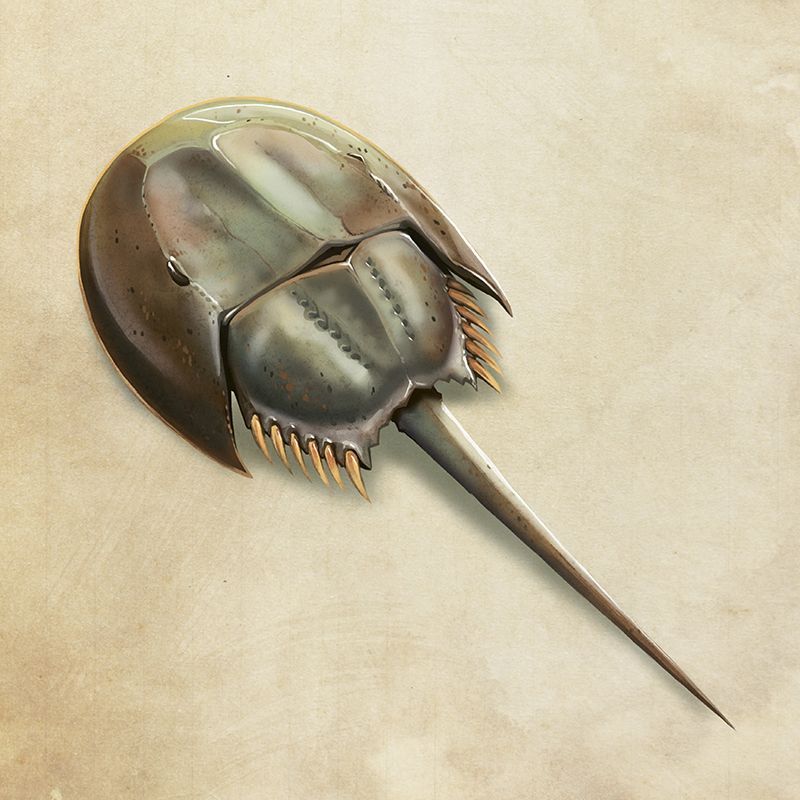Named for its unusual shape, the American horseshoe crab has been called a “living fossil,” as it has been on Earth for some 400 million years, appearing even before dinosaurs

More closely related to arachnids like spiders and scorpions than crabs and crustaceans, Limulus polyphemus’s anatomy has changed very little over time. For protection, the helmet-like shell and barbed tail is designed to look menacing. In truth, these marine arthropods are (literally) spineless, harmless invertebrates that live in shallow waters on soft, sandy, or muddy bottoms
A Real Looker Horseshoe crabs are covered with eyes, as well as photo receptors that aid in orientation when swimming. Research on their eyes, which are capable of detecting both visible and ultraviolet light, has led to a better understanding of human vision.
Shell Game Ever found a horseshoe-shaped shell washed up on the beach? These arthropods molt 16 to 19 times before they reach maturity at nine to 12 yeas old. On each occasion, the shell splits along the front, allowing the crab to simply step out of it.
Miracle Workers Their blood (colored a milky blue by the protein hemocyanin) contains a clotting agent called “limulus amebocyte lysate,” or “LAL,” that the pharmaceutical industry uses to test intravenous drugs and medical equipment for microbial pathogens. If you’ve had an injection, vaccination, or surgery, you’ve probably benefitted from horseshoe crabs.
Moveable Feasting So much for kicking back with a good meal: this bottom feeder can’t eat unless it’s walking. It relies on three of its five pairs of legs (located in rows on its underside) to grind up worms, mollusks, and small crustaceans, then uses two small pinchers to place the food in its mouth.
Mega Millions Hundreds of thousands of horseshoe crabs are “bled” regularly at biomedical laboratories to make LAL, then released back into the wild. On the world market, a quart of horseshoe crab blood is estimated at $15,000, creating a $50-million-per-year industry.
Full Moon Frolics In large groups, they start coming ashore to mate in the spring, usually on a high tide during a new or full moon. Using a specialized pair of claws, the male attaches himself to the top of the larger female’s shell and, together, they crawl to the beach. He fertilizes the eggs as she lays them in a nest in the sand. “Satellite males” might crowd around to aid in fertilization.
Tail Spin The spike on the tail may look dangerous (and was used by early Native American coastal tribes as an arrow point), but its main purpose is to enable the crab to find traction and flip itself upright if overturned. Never grab these gentle giants by the tail—it’ll harm them.